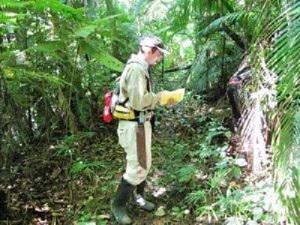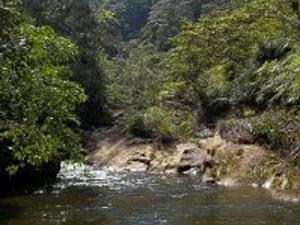Darren Norris
The general objective is to quantify the influence of anthropogenic and natural factors on the abundance of peccaries in continuous areas of the Atlantic Forest.

One of the research trails at Intervales state park. ©Jose Moreira.
White-lipped peccaries (Tayassu pecari) are declining throughout South America as a result of hunting and habitat loss. They are one of the first species to disappear with the advance of humans as they i) are a preferred target for hunters, ii) require large areas. Peccaries are threatened in the state of Sao Paulo due to more than 300 years of intense hunting and deforestation and now the majority (>99%) of forest areas are too small to sustain populations. There is an urgent need to understand anthropogenic and environmental influences on the remaining populations within areas of Atlantic Forest.

The study area at Núcleo Caraguatatuba (Serra do Mar state park).
There are areas of the Brazilian Atlantic Forest that should maintain large populations of peccaries. However, previous studies suggest high abundances in one region (Serra-do-Mar) and low (perhaps ecologically extinct) in another (Paranapiacaba).
Peccaries are known to be negatively impacted by hunting and habitat loss, and their populations are declining across South America. However there is no clear explanation for why they are no longer found in forests that cover over 123,000 hectares. Due to their complex interactions with keystone palm species and role as a preferred prey item of top predators (e.g. jaguar – Panthera onca) investigating the apparent disappearance of peccaries is therefore vital for the effective management of the remaining protected areas of Atlantic Forest.
We propose to investigate the relationship between human and natural factors on peccaries in these two regions using systematic non-invasive techniques. The information generated will contribute towards effective protected area management and the conservation of local and regional biodiversity.